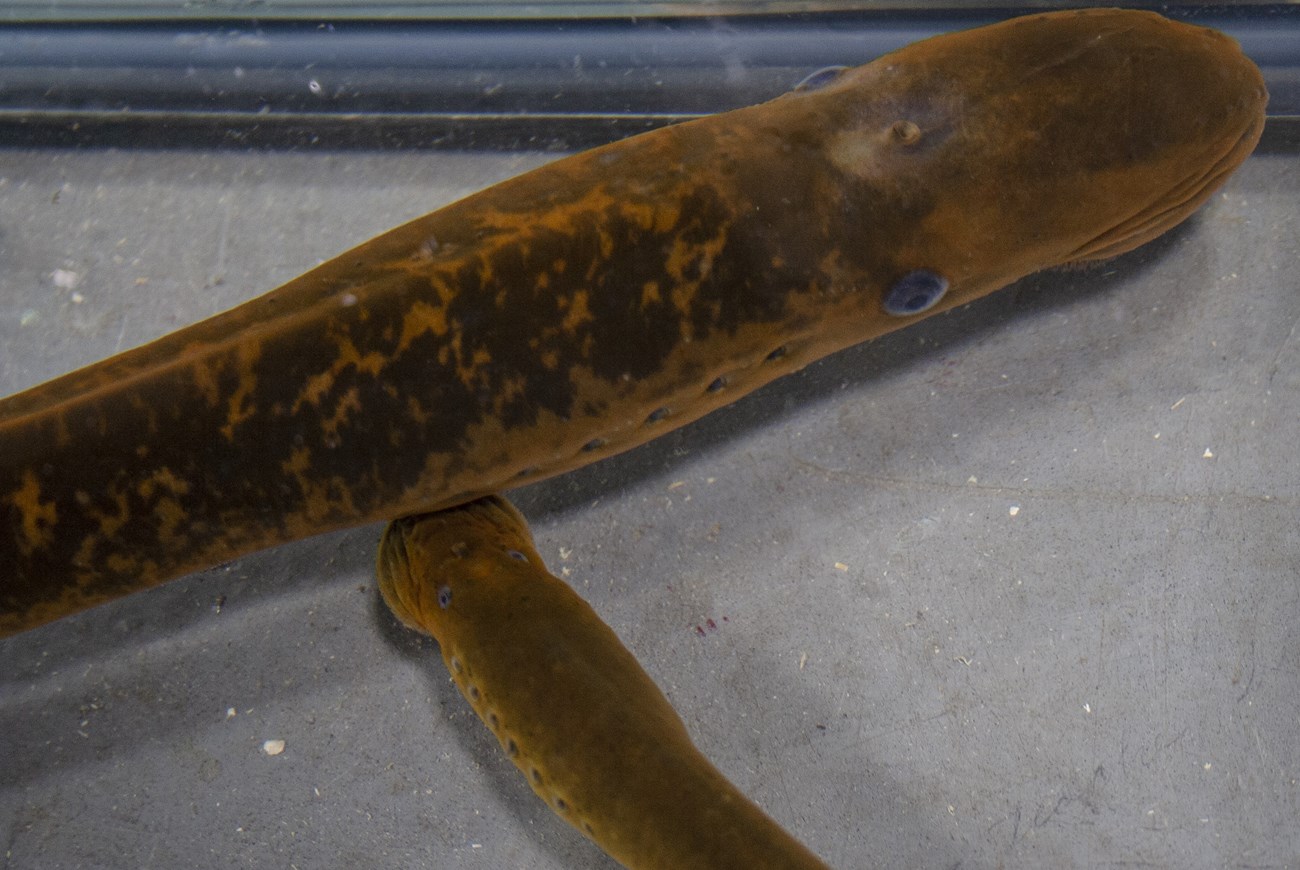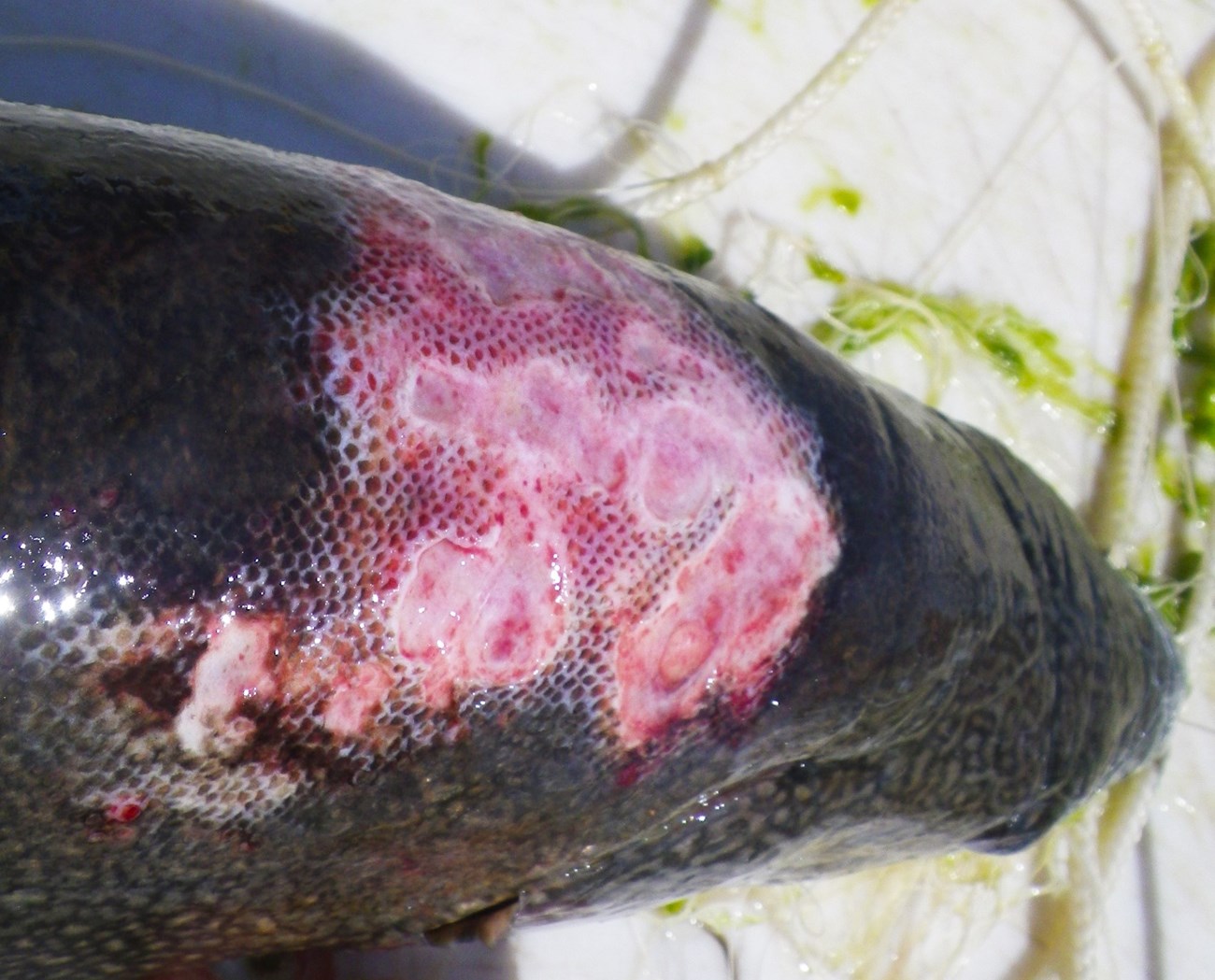Last updated: December 1, 2023
Article
Sea Lamprey around the Apostle Islands

US Fish and Wildlife Service photo
Petromyzon marinus,
aka The Vampire Fish
The Sea lamprey is an ancient parasitic, jawless fish native to the Atlantic Ocean. Its presence was first documented in Lake Ontario in 1835 but improvements to the Welland Canal, that bypasses the natural barrier of Niagara Falls, allowed the lamprey to invade the other Great Lakes above the Falls into Lake Superior by 1938. Relatively unchanged for 340 million years, the sea lamprey lacks bones, scales, and gill coverings. Its parasitic apparatus and opportunistic life cycle permitted it to easily adapt to the plentiful spawning and larval habitats, availability of host fish, and lack of predators to thrive in the Great Lakes.

US Fish and Wildlife photo
The sea lamprey’s disc-shaped mouth, powerful suction, inward curving teeth and serrated tongue enable it to rasp through the scales and skin of its prey, and extract fluid and flesh in vampirish fashion. The attack kills the host fish outright or inflicts injuries making it vulnerable to predation or infection. A single individual lamprey can destroy up to 40 pounds of fish flesh during the lamprey’s 12–18-month parasitic phase. By the 1940s through the 1960s sea lamprey numbers expanded exponentially, inversely lake trout, whitefish and cisco abundance dropped to about only 2% of their pre-lamprey populations, and 85% of surviving fish bore scars from sea lamprey attacks.
Sea lamprey control methods capitalize on its spawning behavior of congregating in lake tributaries, making them vulnerable to a combination of traps and barriers to prevent upstream migration, selective pesticide (lampricides) application and pheromone baiting, a technique that entices the lamprey to spawn in streams where the larvae cannot survive. While native fish populations have recovered thanks to lamprey control, harvest quotas, seasons, and protection of spawning habitat sanctuaries, lamprey eradication is unlikely and control efforts will be essential to protect native fish populations.
